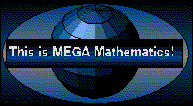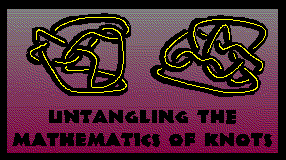


Because knots are beautiful, interesting, and fun, students often have a difficult time making the shift from exploring them playfully to regarding them mathematically. This offers teachers an opportunity to help students see that any object can be regarded mathematically, and to show them ways to do so. (See Mathematical objects, their properties, and operations on them and doing what mathematicians do.
No one has found a straightforward and complete way to articulate the complexities of knots, even though they are very familiar to all of us. Students should not be expected to grasp all the intricacies of what mathematicians have discovered about knots or how they describe that knowledge. The goal is for students to understand the variety of questions and problems that can be posed about knots, and to experience some of the problem-solving techniques that mathematicians have used while trying to unlock their mysteries.
Translating spatial experience into verbal exposition is a challenge for all of us, so it can be difficult and frustrating for students to talk about what they see and understand when studying knots. Do not despair! After all, much of the history of Knot Theory is the story of mathematicians seeking precise ways to describe knots, classify them, and articulate what occurs when they are transformed or combined. Teachers should look for improvement and progress in students' ability to communicate, and use discussion and examples to support it.
If students begin to understand that stating that something is true has special meaning in mathematics, they have made great strides in understanding the subtleties of mathematical truth . It is more valuable for them to understand the importance of the question, ``How can I be sure this is true?'' than it is for them to produce correct mathematical proofs. Just raising this issue is sufficient for students who have not thought about it before. They will not lack experiences for reexamining issues of truth, conjecture, and falsehood in a variety of other contexts. The purpose of raising them here is to create possibilities for analytical thinking and problem solving, not to frustrate or confuse them in their efforts to find things out.